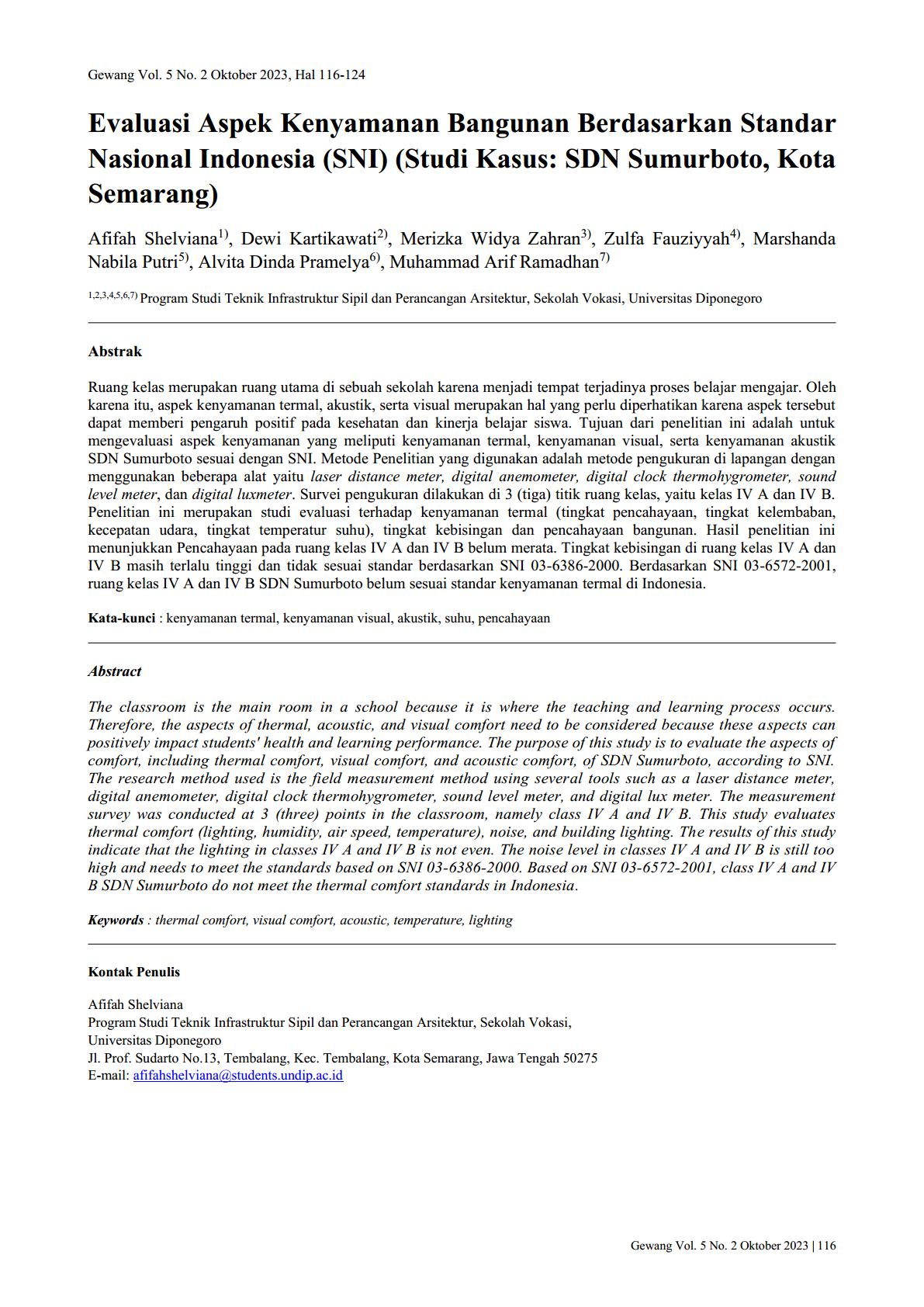Evaluasi Aspek Kenyamanan Bangunan Berdasarkan Standar Nasional Indonesia (SNI) (Studi Kasus: SDN Sumurboto, Kota Semarang)
Main Article Content
Abstract
The classroom is the main room in a school because it is where the teaching and learning process occurs. Therefore, the aspects of thermal, acoustic, and visual comfort need to be considered because these aspects can positively impact students' health and learning performance. The purpose of this study is to evaluate the aspects of comfort, including thermal comfort, visual comfort, and acoustic comfort, of SDN Sumurboto, according to SNI. The research method used is the field measurement method using several tools such as a laser distance meter, digital anemometer, digital clock thermohygrometer, sound level meter, and digital lux meter. The measurement survey was conducted at 3 (three) points in the classroom, namely class IV A and IV B. This study evaluates thermal comfort (lighting, humidity, air speed, temperature), noise, and building lighting. The results of this study indicate that the lighting in classes IV A and IV B is not even. The noise level in classes IV A and IV B is still too high and needs to meet the standards based on SNI 03-6386-2000. Based on SNI 03-6572-2001, class IV A and IV B SDN Sumurboto do not meet the thermal comfort standards in Indonesia.
Downloads
Article Details
This license enables reusers to distribute, remix, adapt, and build upon the material in any medium or format, so long as attribution is given to the creator. The license allows for commercial use

